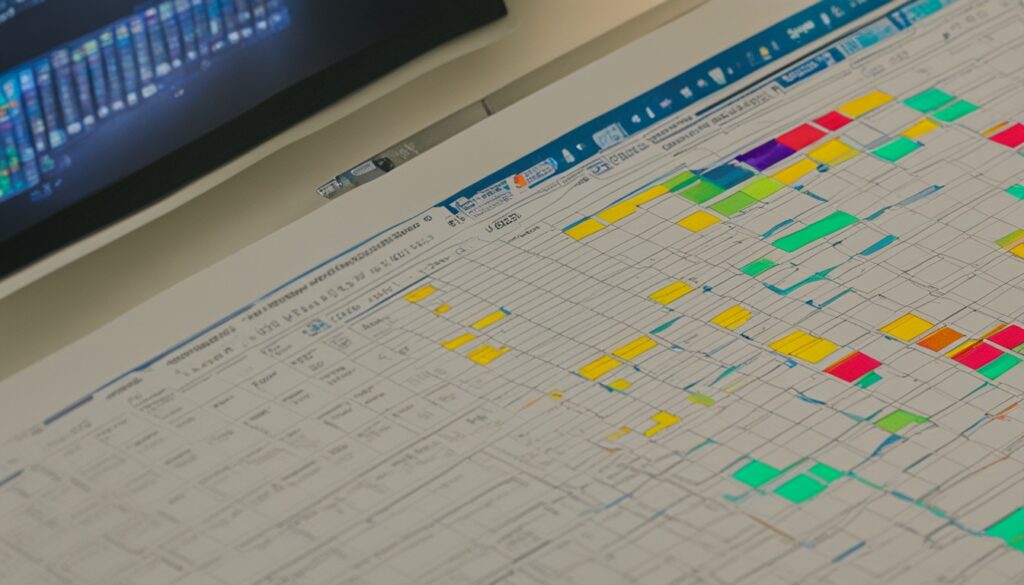
Negative SEO impacts can reduce a website's ranking, traffic, and conversion rates. These issues arise from changes in algorithms, competitor activities, technical problems, or cyber attacks. To bounce back and safeguard your site, you must take specific steps.
Start by auditing your site thoroughly. Use tools like Google Search Console and Google Analytics. This helps to spot any issues that affect your site's performance. It also finds SEO problems that lower your ranking. Once you know the issues, you can make a plan to fix them.
Then, fix the problems you've found. You might need to update your content to use the right keywords. Also, follow SEO best practices. Don't forget to make your site easy to use, with quick page loads and simple navigation. Fixing these matters lets you start improving your site's visibility again.
Always keep an eye on how your changes are working. SEO requires ongoing effort. Checking how your site is doing and making smart choices helps you keep getting better results. This way, you can climb higher in search engines and get more visitors.
Finally, highlight your expertise and trustworthiness in your area. Prove to search engines that your site matters and is reliable. You can do this by creating top-notch, lasting content that's useful to readers. Also, join in on social media, earn good backlinks, and ask for positive reviews. These actions can really lift your site's standing.
By following these steps and always being ready to work on SEO, you can fight through tough times and come out stronger. SEO is always evolving and improving. Keeping in touch with the latest trends and practices ensures your website's ongoing success.
Key Takeaways:
- Conduct a thorough site audit using tools like Google Search Console and Google Analytics to identify any issues affecting your site's performance.
- Address and fix these issues, including updating content, optimizing keywords, improving user experience, and enhancing site speed.
- Monitor the results of your actions and make adjustments as needed to continue improving your site's performance.
- Focus on building your authority and reputation in your niche through high-quality content, natural backlinks, social media engagement, and positive customer reviews.
- Maintain a proactive approach to SEO by staying up-to-date with trends and best practices.
Identifying and Recovering from Manual Penalties
Google manual penalties can cause big issues for website owners. Google's webspam team imposes these penalties when they find violations. It's key to figure out the penalty and fix it to get your site back up on search engines.
Types of Manual Penalties
There are two kinds of manual penalties: site-wide and partial. Site-wide penalties affect your whole site, leading to a drop in rankings and traffic. Partial penalties hit only certain areas or pages, leaving the rest untouched.
Identifying a Manual Penalty
Finding out if you have a manual penalty means checking Google Search Console. There, you'll see a notice giving details on the penalty reasons and which part of your site is affected. It's crucial to dig deep into this info to understand the problem.
Recovering from a Manual Penalty
To bounce back from a manual penalty, a broad scan of your site is needed. Look into your content quality, backlinks, site design, mobile use, and how fast your pages load. Find and fix what's wrong to lift the penalty.
"A comprehensive site audit is essential to uncover any underlying issues that may have contributed to the manual penalty."
In the recovery action, focus on axing bad links, boosting on-page SEO, and following Google's rules strictly. Always check your site's performance, tweak as needed, to keep a good SEO standing.

Staying in the know about Google's updates and good SEO practices helps dodge manual penalties in the future. Strong SEO work not only gets you over penalties but also helps your online presence grow securely.
Conducting a Comprehensive Content Audit for Recovery
After a Google Algorithm update, it's essential to do a thorough content audit for recovery. This involves checking all your website's content. You look at its quality, how relevant it is, and if it follows SEO best practices.
When auditing, look for duplicate content or pieces that are too thin. Avoid cramming keywords where they don't fit and make sure what you write is valuable to readers. Update or refresh any outdated or low-quality content too.
Adapting to Google's new rules means focusing on high-quality, useful, and engaging content. This content is the best way to draw in users and get respected backlinks.
Remember, a content audit never stops. Algorithms and what users expect change. So, keep checking and updating your content to stay relevant and good with the rules.
If you run regular content audits and fix things, your website will do better with Google's changes. This effort boosts your content's quality and makes what you say more important and in line with what visitors want.
Key Takeaways:
- Analyze all your website content to evaluate its quality, relevance, and compliance.
- Pay attention to factors like duplicate content, thin content, and keyword stuffing.
- Identify and update outdated or low-quality content.
- Create high-quality, informative, and engaging content to attract users and earn authoritative backlinks.
- Maintain an ongoing content audit process to adapt to algorithm updates and evolving user expectations.

Conclusion
Recovering from SEO penalties needs a smart plan and hard work. This article gives steps to help you get back on track. Follow these, and you can be successful online.
Start with a deep look at your site. Use tools like Google Search Console and Google Analytics to spot problems. Then, fix what's wrong to do better.
To keep your site healthy, focus on your brand. Make sure the content you create is top-notch. This content should interest your readers. Connect with others and be active on social media. This helps more people know about you.
It's critical to follow the latest in SEO and make changes when needed. Always check how well your work is doing. Then, tweak things to get even better results. By doing this, you’ll keep your site in top shape for the long haul.
FAQ
What is SEO penalty recovery?
SEO penalty recovery means coming back from search engine issues. It's about getting a website to rank better, get more visitors, and make more sales after a fall. This fall might be due to algorithm changes, competitor moves, technical issues, or attacks.
How do I recover from a manual penalty?
To bounce back from a manual penalty, start with these steps. First, figure out the penalty by checking what Google Search Console tells you. Then, do a deep clean of your site. Next, use the right SEO strategies and keep checking your SEO post-recovery to avoid more penalties.
Why is a content audit important for recovery?
An in-depth content audit is key for getting better. It involves checking all your content to see if it's good, relevant, and follows SEO rules. Doing this helps spot and fix old or poor content that might've led to the penalty.
What can I do to maintain SEO health after recovery?
After recovery, focus on becoming an authority in your area. How? By creating great content, getting natural backlinks, being active on social media, and earning good reviews. Keep an eye on how these efforts are working. Also, keep learning about SEO and adjust your plan as needed.











